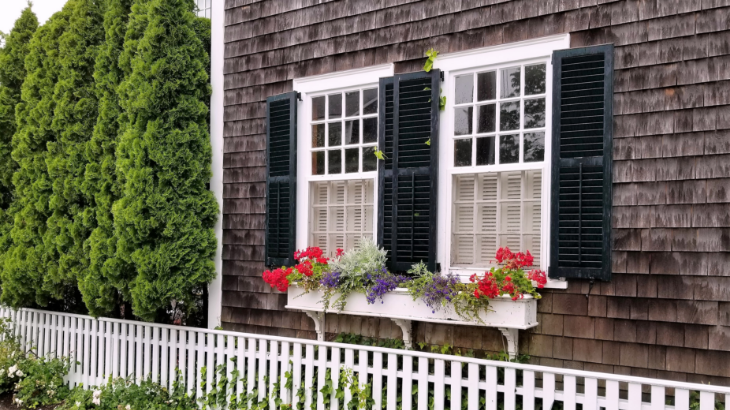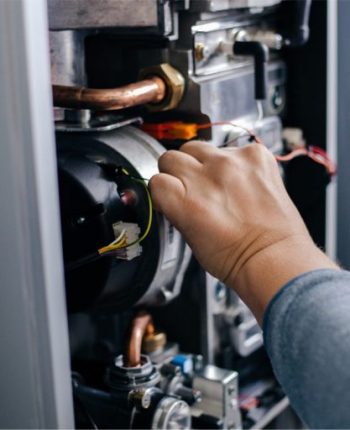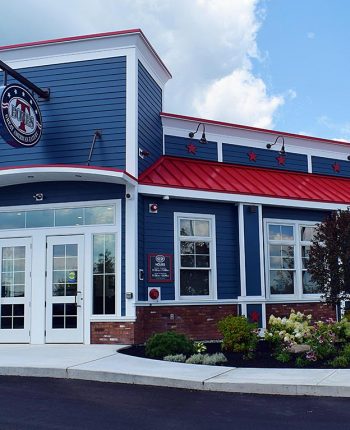
Plan Ahead to Save on Commercial, Industrial and Municipal Projects
For builders, architects or general contractors in New Hampshire, spring and summer are the busiest times of the year with a host of new commercial, industrial and municipal projects on the board. There is no better time than now, before hammering the first nail, to save money or to improve energy efficiency on new construction.
With many incentives available to reduce the upfront cost, the time to think about maximizing energy efficiency is when a new building is still only on the blueprints. Energy usage and long-term utility bills can be reduced by discussing upgrading to energy-efficient equipment and systems for a new project during the design and planning stage. NHSaves, through the partnership of Eversource, Liberty Utilities, New Hampshire Electric Co-Op and Unitil, offers technical expertise and workshops to guide builders, architects and general contractors through this process.
Here are 10 ways to reduce energy usage and save money.
1. Keep Design in Mind
Energy efficient construction begins in the design phase. Contact your NHSaves utility partner early in the design stage to make it easier to incorporate energy efficiency into a project. We work with architects and designers to take the necessary steps to design an energy-efficient commercial, industrial, multi-family or municipal building.
2. Take Advantage of Technology
By utilizing energy modeling software during the design phase, your NHSaves utility partner can accurately estimate the building’s energy use, and then modify design choices that provide the optimum balance between building performance and construction cost.
3. Location, Location, Location
How you site a building can be one of the most important considerations. With building orientation and design ideas in mind, you can take advantage of natural daylight. Optimizing passive solar gain reduces heating loads during the winter and cooling loads in summer.
4. Beat the Heat
Heating costs can consume up to 50 percent of a building’s energy bills. An energy-efficient heating and cooling system will pay off in the long term. Programmable thermostats and control systems that adjust for outdoor temperatures can provide significant energy savings and should be incorporated into the design.
5. Here Comes the Sun
Generating electricity or supplemental heat/hot water through the sun’s power will offset the rise in energy costs. Grid-tied solar photovoltaic (PV) panels provide a cost-effective form of renewable energy to power lighting, heating, cooling, appliances and hot water.
6. Tighten Up
Sealing the building envelope as tightly as possible is the most effective cost measure a builder can select and it greatly improves comfort by reducing drafts. Once the building is airtight, measures should be taken to super-insulate the ceiling, walls and floors. Selecting the right framing strategy simplifies the insulation process and minimizes thermal bridging.
7. Let the Air Flow
With an airtight building, fresh filtered air and moisture control is essential. Energy-efficient ventilation systems, known as heat recovery ventilation (HRV) systems or energy recovery ventilation (ERV) systems, expel stale air while recovering its heat and returning it to the building with the fresh air.
8. Be Landscape Savvy
The right landscape design is about more than beauty; it’s also about creating shade for the building during summer and allowing the winter sun to heat the building. Planting trees that provide maximum cover during the cooling season and exposure during the heating season should be a central focus of your landscape design.
9. Don’t Let Windows and Doors Undo All Your Good Work
An airtight building envelope can be compromised if windows and doors are not properly installed. ENERGY STAR windows and doors are independently tested by the National Fenestration Rating Council and meet strict guidelines set by the Environmental Protection Agency.
10. Insulate
Do it right the first time and you’ll save a lot of time and money. It’s much easier to design and build a well-insulated building than having to go back later and attempt to improve it. Some of the available energy-efficient systems and materials are ICFs (Insulated Concrete Forms), thicker wall constructions and roof insulations, and the use of blown-in insulation and spray foam.
When you design with energy efficiency in mind you can utilize prescriptive and custom incentives designed to help you purchase more energy-efficient equipment such as lighting and controls, HVAC systems, chillers, water heaters, variable frequency drives and air compressors. You’ll also reduce initial equipment costs for qualifying equipment, while business owners, facilities managers and municipalities will see long-term savings in their electric bills.
For more information on how to plan ahead during the busy construction season, visit NHSaves New Equipment and Construction program.


